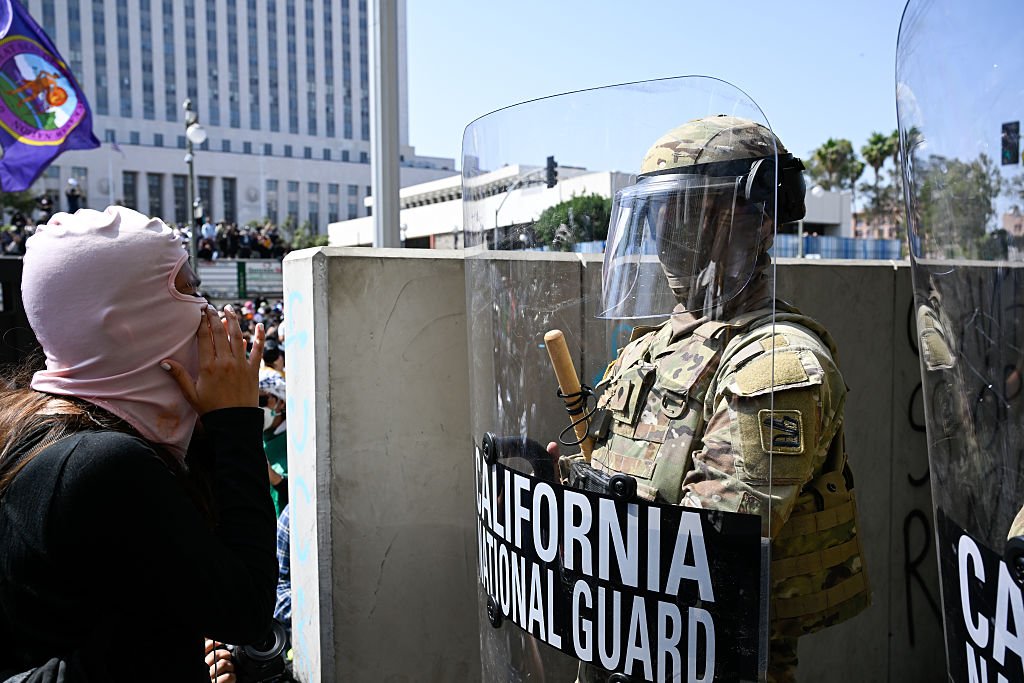TL;DR: Protests in Los Angeles intensify over immigration raids amid rising concerns about President Trump’s deportation strategy. A focus on the case of Narciso Barranco highlights the complexity of immigration enforcement, as many detained have minimal or no criminal records, igniting public outrage and calls for change.
Unraveling Immigration Raids: The Story Behind the Headlines
The landscape of immigration enforcement in the United States has changed dramatically, particularly under President Donald Trump’s administration. The emphasis on cracking down on undocumented immigrants, particularly those labeled as “criminals,” has sparked widespread protests and raised grave concerns regarding the treatment of detainees. This article delves into the complexities and nuances of recent immigration raids, focusing on the case of Narciso Barranco, whose experience exemplifies the conflicting narratives surrounding immigration policies.
The Rise of Protests in Los Angeles
In the heart of Los Angeles, protests have surged as communities rally against mass deportation tactics employed by U.S. Immigration and Customs Enforcement (ICE). The protests have centered around the fear and anxiety gripping undocumented immigrants and their families. Critics argue that ICE’s indiscriminate approach often targets individuals with no meaningful criminal histories. The ramifications of these policies stretch beyond mere statistics; they deeply affect families, neighborhoods, and the fabric of American society.
Understanding ICE’s Tactics
ICE claims to prioritize the apprehension and deportation of violent criminals and gang members. Yet, evidence suggests a troubling trend: nearly half of those apprehended by ICE lack criminal records or have committed minor offenses, often spanning only petty violations like traffic infractions. Such statistics contradict the narratives of a streamlined, justice-driven deportation system. Instead, they paint a picture of an agency that frequently acts without discernment, casting a wide net that captures innocents alongside the genuinely culpable.
The Case of Narciso Barranco
One of the most emblematic cases—from a larger narrative of migration and enforcement—has been that of Narciso Barranco. A dedicated landscaper and undocumented immigrant, Barranco was apprehended in a deeply troubling incident that highlighted the aggressive tactics ICE employs. Caught on video while being restrained, Barranco appeared to be violently confronted, igniting outrage on social media and within immigrant communities.
Eyewitness accounts from his son, Alejandro Barranco, provide a poignant human context to the story. Alejandro described his father as an upstanding individual who has contributed to American society since the 1990s. The juxtaposition of Barranco’s status and his treatment raises critical questions about the motives behind such raids. Amidst the chaos of his father’s arrest, Alejandro—who serves as a U.S. Marine—has taken to social media and community platforms, fueling discussions around human rights and the dignity of undocumented individuals.
The Broader Implications of Public Outrage
As public outcry grows over the treatment of individuals like Barranco, the political and social ramifications become even more poignant. Critics of the Trump administration’s policies have expressed their concerns through various means, including social media campaigns and crowdfunding efforts aimed at providing legal support for those like Barranco caught in the crossfire of immigration enforcement.
A renewed discourse is emerging around the ethics of targeting undocumented immigrants and the impact these strategies have on families. Callers demanding reform argue that the focus on widespread deportation not only tears families apart but also fails to address the root causes of immigration and the complexities of human rights.
The Call for Change
In the wake of these protests and stories like Narciso Barranco’s, advocacy groups have begun mobilizing around a singular message: reform is critical. The goal is to push for policies that offer greater protections for vulnerable populations rather than aggressive deportation and enforcement strategies. The resilience shown by communities banding together is a powerful testament to the enduring human spirit and the quest for justice.
The current narratives around immigration are far from simple, woven with stories of resilience, fear, and hope. As America grapples with these challenges, the story of Narciso Barranco serves as a microcosm of the broader struggle for humane immigration policies that recognize the dignity of every individual, regardless of their legal status.












